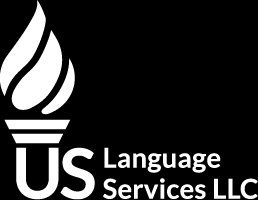What Is A Marriage Green Card?

If you were recently married to a U.S. citizen or green card holder, you may be eligible for a marriage green card. As the spouse of a U.S. citizen or green card holder, you are now the immediate family member of that person.
A marriage green card is like any other green card. It is officially called a “Permanent Residence Card”. A green card allows non-U.S. citizens to live permanently in the United States. After you obtain a green card, you can lawfully work and live anywhere in the United States. Having a green card is the first step to applying for U.S. citizenship. You must be married and have a green card for 3 years before applying for citizenship.
How Can I Get A Marriage Green Card?
In order to get a marriage green card there are generally three steps. These are the three steps:
- Submitting the Form I-130, Petition for Alien Relative.
- Submitting your green card application.
- If you live in the U.S. this is Form I-485.
- If you live abroad this is Form DS-260.
- Attend your green card interview.
Each step is different depending on your situation. We will go over more details, the timeline and cost for each.
In this guide we will cover these questions:
- What is The Difference Between Adjustment of Status and Consular Processing?
- What is The Cost of a Marriage Green Card?
- How Long Does It Take To Get A Marriage Green Card?
- What Is the I-130 Petition For Alien Relative?
- What Is Application I-485?
- What Is Form DS-260 Immigrant Visa Electronic Application?
- What Happens At The Green Card Interview?
- Where Can I Get A Certified Translation?
What is The Difference Between Adjustment of Status and Consular Processing?
Adjustment of Status means applying from inside the U.S. You will apply for a green card this way if you are married to a U.S. citizen, or green card holder and you live in the United States.
Consular Processing means applying from another country. You will apply for a green card this way if you are married to a U.S. citizen, or green card holder and you live abroad.
The USCIS and NVC require most supporting documents to be translated in English. In addition to the forms that will be mentioned here, you may need to submit a certified translation of any documents that are not in English. The most common documents that need to be translated for a Marriage Green Card include:
- Marriage certificates
- Divorce decrees
- Criminal records
- Birth certificates
- Death Certificates
- Annulment Papers
You can order a certified translation of these documents from our online store:
Order Your Certified Translation
What is The Cost of a Marriage Green Card?
The cost for a marriage green card is different if you’re applying from inside the United States, or applying from another country. The total cost will be the combination of different forms and applications. The cost of the forms listed below does not include the cost of a medical examination, which varies.
- Adjustment of Status: The total cost is $1,760 to apply for a marriage green card from within the U.S. This amount includes the combined price of these forms:
- I-130: $535
- I-485: $1,140
- Biometrics Fee: $85
- Consular processing: The total cost is approximately $1,525 to apply for a marriage green card from outside the U.S. This amount includes the combined price of these forms:
- I-130: $535
- I-864: $120
- State Department Processing Fee: $325
- USCIS Immigrant Fee: $220
- DS-260: $325
How Long Does It Take To Get A Marriage Green Card?
The amount of time it takes to get a marriage green card depends on which of these 4 situations apply to you. The time broadly ranges from 11-26 months.
The following times are only estimates. These estimates are based on USCIS processing time and the National Visa Center (NVC) Visa Bulletin. These times can vary.
The USCIS has a way to check your case’s processing time, and an explanation of how processing times are determined.
If you are married to a U.S. citizen and currently living in the U.S.
- Filing your I-130 and I-485 at the same time can take between 10-21 months.
- Scheduling a green card interview and awaiting approval can take between 1-2 months.
- Total: 11-23 months.
If you are married to a U.S. green card holder and currently living in the U.S.
In this situation, you cannot file your I-130 and I-485 at the same time. There is also an added wait for a green card to become available. There must be a green card available before you can file your I-485.
- Filing your I-130 can take 9-10 months.
- Time for a green card to become available on the Visa Bulletin is currently 0 months.
- Filing your I-485 can take 11 months.
- Scheduling a green card interview and awaiting approval can take between 1-2 months.
- Total: 21-23 months
If you are married to a U.S. citizen and currently living abroad.
- Filing your I-130 can take 9-10 months.
- Transfer of case from USCIS to NVC can take 3-5 months.
- Filing your DS-261 can take 3 weeks.
- Filing your DS-260 can take 3-5 months.
- Scheduling a green card interview and awaiting approval can take 1-3 months.
- Total: 19-26 months.
If you are married to a U.S. green card holder and currently living abroad.
There is also an added wait for a green card to become available. There must be a green card available before you can file your DS-261 and DS-260.
- Filing your I-130 can take 9-10 months.
- Transfer of case from USCIS to NVC can take 3-5 months.
- Time for a green card to become available on the Visa Bulletin is currently 0 months.
- Filing your DS-261 can take 3 weeks.
- Filing your DS-260 can take 3-5 months.
- Scheduling a green card interview and awaiting approval can take 1-3 months.
- Total: 19-26 months.
What Is the I-130 Petition for Alien Relative?
Submitting a Form I-130 is the first step in obtaining a marriage green card. The I-130 is officially called the “Petition for Alien Relative”. In the context of marriage, the purpose of the I-130 is to prove to USCIS that your marriage is valid and authentic. U.S. citizenship and Immigration Services want to know your marriage is not fraudulent.
The person who files the I-130 petition is the person who is already a U.S. citizen or U.S. green card holder. They are called the “Petitioner”. The person who is trying to obtain a green card is called the “beneficiary”.
There are several different types of documents that the petitioner and the beneficiary need to provide for the I-130:
- To establish proof that the petitioner is a U.S. citizen they will need to provide several documents. These include but may not be limited to:
- A copy of the petitioner’s birth certificate if they were born in the U.S.
- A copy of the petitioner’s naturalization certificate or citizenship certificate if they obtained citizenship in these ways.
- A copy of the petitioner’s Consular Report of Birth Abroad (CRBA) if the petitioner was born abroad.
- A copy of the petitioner’s unexpired U.S. passport.
- An original statement from a U.S. consular officer verifying you are a U.S. citizen with a valid passport.
- If the petitioner is a green card holder, they will need to provide:
- A copy of the front and back of the petitioner’s green card.
- To establish proof that your marriage is valid you will need to provide several documents that may include, but are not limited to:
- Documents showing that you own property together.
- A lease to prove that you live at the same address.
- Joint bank statements showing you share financial resources.
- Birth certificates of children born to you and your spouse together.
- Legal proof of name-change if applicable.
- Two passport-style photographs.
- Evidence that any previous marriages are terminated.
According to USCIS, if you submit a document with information in a foreign language, you must also submit an English translation. To guarantee that your I-130 is processed as quickly as possible, it helps to use a certified translator. You can order a certified translation of these documents from our online store:
Order Your Certified Translation
You have two options when filing your form I-130. You can mail a paper copy, or file online.
By Mail: If you are filing your I-130 by mail, the address you mail your form to, depends on where you live. USCIS provides a detailed list of which address you should use.
Online: If you are filing your I-130 online, the first step is to create an account. If you need more help signing up, USCIS has provided more specific instructions.
What Is Application I-485?
This is step 2 if you are applying for a green card while living in the United States.
Form I-485 is officially called “Application to Register Permanent Residence or Adjust Status”. It must be filed by the spouse of a U.S. citizen or green card holder. This form should be used if you are applying for a green card, while living in the United States. This is known as an Adjustment of Status. The I-485 is filed with USCIS. The address you send it to, depends on where you live. The purpose of the I-485 is to prove that the spouse is eligible for a green card.
There are several different types of documents required along with Form I-485 that the beneficiary spouse needs to provide. These include but may not be limited to:
- Two passport style photographs.
- A copy of the beneficiary’s government-issued identity document with a photograph.
- A copy of the beneficiary’s birth certificate.
- Proof that the beneficiary entered the U.S. legally, which is a copy of your I-94, as well as the visa you used to enter the U.S.
- Proof that the petitioning spouse is willing and able to financially support the beneficiary spouse. This form is called Form I-864 Affidavit of Support.
- Form I-693, which is a medical report and vaccination record by a USCIS approved doctor.
For spouses of U.S. citizens the I-130 and I-485 can be filed at the same time. This is called “Concurrent Filing”.
For spouses of green card holders the I-130 and I-485 cannot be filed at the same time. There must be a green card available on the Visa Bulletin before filing form I-485. This waiting period exists because the U.S. limits the number of visas given in certain categories, and to certain countries, per year.
What Is Form DS-260 Immigrant Visa Electronic Application?
This is step 2 if you are applying for a green card while living abroad.
Form DS-260 is officially called the “Immigrant Visa Electronic Application”. It must be filed by the spouse of a U.S. citizen or green card holder. This form should be used if you are applying for a green card, while living abroad. This is known as Consular Processing. The purpose of the DS-260 is for the NVC to gather information and documents. When the NVC finishes processing the DS-260, it is transferred to the U.S. consulate in the country where the applicant is located.
This step can only take place after the U.S. citizen or green card holder has filed form I-130. After the NVC creates your case in their system, they will send you a welcome letter by email or physical mail. This welcome letter will have your NVC case number and invoice I.D. number. You can log in with this information to file form DS-260. The State Department provides a sample DS-260 to view if you haven’t started the filing process.
There are several different types of documents that should accompany Form DS-260. These should be provided by the beneficiary spouse. These include but may not be limited to:
- A copy of the beneficiary’s passport.
- A copy of the beneficiary’s birth certificate.
- Court and prison records if the beneficiary was ever convicted of a crime, even if they were pardoned.
- Marriage certificates from all previous marriages.
- Marriage termination documents for both spouses if they were married. This includes divorce certificates, death certificates or annulment papers.
- Photocopy of military records, if the beneficiary served in the military.
- Police clearance certificate from all countries the beneficiary has lived in for more than 6 months if the beneficiary is 16 years of age or older.
- Proof that the petitioning spouse is willing and able to financially support the beneficiary spouse. This form is called Form I-864 Affidavit of Support.
What Happens At The Green Card Interview?
This is step 3, the final step. The goal of the interview is for the interviewing officer to decide if the marriage is authentic, and not fraudulent. There is no prescribed set of questions available to the public. The interviewing officer can create their own questions. These questions can be about anything including how the couple met, what their wedding day was like, and what their future plans are together. If the interviewing officer is satisfied by the interview, they can approve the spouse for a green card.
The location of the interview depends on if you are applying from the U.S. or in another country.
In the United States
If you are applying through Adjustment of Status, your interview will take place in your local USCIS office. In this case, the petitioning spouse will attend with the beneficiary spouse. If your green card is approved, the physical copy will usually arrive in the mail, within 2-3 weeks.
What to bring to your interview
Most of the documents you should bring to your interview are the same as the ones you submitted with your I-485. Additional documents include:
- The appointment notice, I-797 for your interview.
- A copy of the I-485 application.
- Two passport style photographs.
In Another Country
If you are applying through Consular Processing, your interview will be at a U.S. embassy or consulate. This will be in the country where the beneficiary spouse is located. The State Department has many embassies and consulates throughout the world.
The petitioning spouse may or may not have to attend the interview. Every person required to attend will be named in the interview Appointment Letter from the NVC. Most likely the petitioning spouse will not have to attend the interview.
If the interviewing officer approves the green card application . The beneficiary spouse will get a visa stamp in their passport. The next thing to do is pay the USCIS Immigrant Fee. This must be paid before they can enter the U.S. This fee must be paid before USCIS will mail your green card to your address in the U.S.
Your visa stamp allows you to travel to the U.S. When you enter the U.S., you enter as a green card holder. Your physical green card should arrive within 2-3 weeks of your arrival in the U.S.
What to bring to your interview
Most of the documents you should bring to your interview are the same as the ones you submitted with your DS-260. Additional documents include:
- The interview appointment letter from the NVC.
- Beneficiary spouse’s unexpired passport.The passport should be valid for six months after the day you plan to travel to the U.S.
- Two passport style photographs.
- DS-260 Confirmation Page.
Where Can I Get a Certified Translation?
The documents and forms mentioned above may not be a complete list. The USCIS and NVC require most supporting documents to be translated in English. You may need to submit a certified translation of any documents that are not in English. The most common documents that need to be translated for a Marriage Green Card include:
- Marriage certificates
- Divorce decrees
- Criminal records
- Birth certificates
- Death Certificates
- Annulment Papers
You can order a certified translation of these documents from our online store:
Order Your Certified Translation
U.S. Language Services is not a law firm; its content should not be taken as legal advice. For specific legal concerns, please consult a licensed attorney. Similarly, financial information on our site is for informational purposes only, not financial advice. Consult a certified financial advisor or tax professional for advice tailored to your situation.
By accessing U.S. Language Services, you acknowledge that it does not provide legal or financial advice. You agree not to rely on its content as such. U.S. Language Services and its contributors bear no liability for any inaccuracies, losses, or damages resulting from the use of information on our site.
Guaranteed Acceptance
All our certified to English translations are accepted by the USCIS. Our translations follow the guidelines established by the USCIS and are also accepted by educational institutions.
Most Requested Documents
FAQs
You can order most translations 24 hours a day, 7 days a week through our online store. For large projects (more than 20,000 words or 50 pages), please request a quote.



